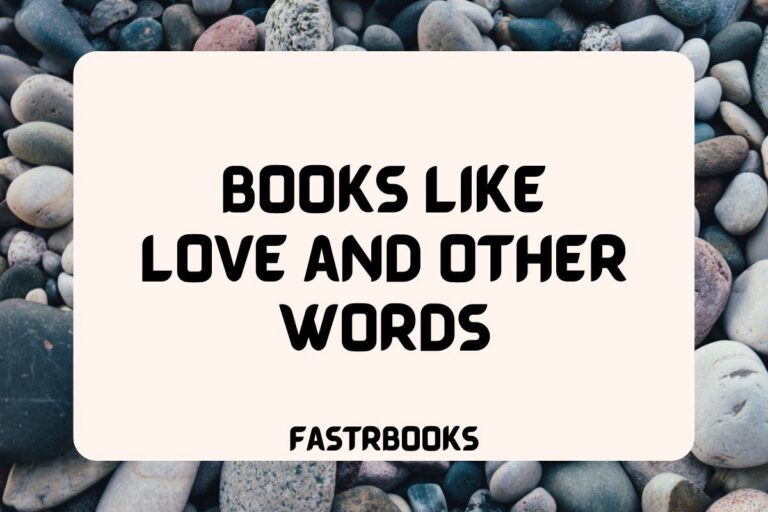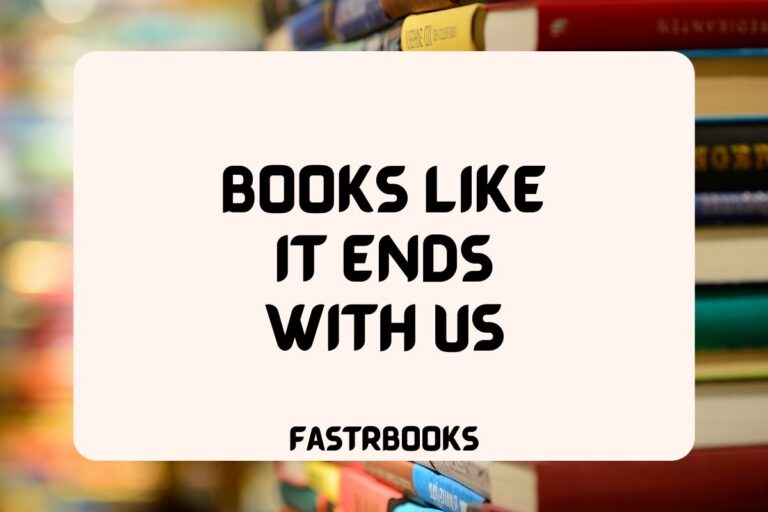19 Books Like 1984

George Orwell’s dystopian masterpiece, “1984,” has been a hot pick among readers with its chilling portrayal of a totalitarian society where individual freedom is nonexistent and truth is constantly manipulated.
If you found yourself enthralled by the oppressive atmosphere and thought-provoking themes of surveillance and control in “1984,” you’re not alone.
Fortunately, there are many other books that explore similar dystopian landscapes, challenge societal norms, and delve into the complexities of power and resistance.
Here, we’ve compiled a list of novels that will appeal to fans of “1984,” offering provocative narratives that will keep you questioning the world around you long after you’ve turned the final page.
Books Like 1984
1. Brave New World by Aldous Huxley
“Brave New World” is set in a dystopian future where society is engineered into a rigid caste system, with citizens conditioned from birth to accept their societal roles without question. The narrative follows Bernard Marx, who questions his society’s values and the concept of happiness controlled by the state through drugs and conditioning. The book explores themes of freedom, individuality, and the consequences of a technologically advanced society that has sacrificed human values.
Major Similarities: Both “Brave New World” and “1984” explore the dangers of governmental control and the loss of individuality in society. While “1984” focuses on the oppressive control through surveillance and fear, “Brave New World” presents a society that uses pleasure and conditioning as tools of control. Both novels offer a critique of the potential for governments to extend their influence into the personal lives of citizens, using technology and psychological manipulation.
2. Fahrenheit 451 by Ray Bradbury
“Fahrenheit 451” is set in a future America where books are outlawed, and “firemen” burn any that are found. The protagonist, Guy Montag, is a fireman who becomes disillusioned with his role in suppressing knowledge and begins to seek out and preserve books. The novel explores themes of censorship, the power of knowledge, and the importance of critical thinking in resisting oppressive governments.
Major Similarities: Like “1984,” “Fahrenheit 451” deals with the theme of government censorship and the control of information to maintain power. Both novels depict societies where questioning the status quo is dangerous and highlight the importance of intellectual freedom and resistance against oppressive regimes.
3. We by Yevgeny Zamyatin
“We” is a dystopian novel set in a future where citizens live under the surveillance of an authoritarian government, known as the One State. The story is told through the diary entries of D-503, an engineer who begins to question the principles of his society after falling in love. The novel explores themes of individuality versus collectivism, freedom, and the use of technology for control.
Major Similarities: “We” shares with “1984” the concept of a surveillance state where individual thoughts and actions are monitored to ensure conformity to the state’s ideology. Both novels portray protagonists who begin to question and ultimately rebel against their societies’ constraints, highlighting the human spirit’s resilience.
4. The Handmaid’s Tale by Margaret Atwood
“The Handmaid’s Tale” is set in the dystopian Republic of Gilead, where a theocratic regime has taken power in response to environmental disasters and plummeting birth rates. The story follows Offred, a Handmaid whose sole purpose is to bear children for the elite. Through Offred’s eyes, the novel explores themes of gender oppression, freedom, and resistance.
Major Similarities: Similar to “1984,” “The Handmaid’s Tale” explores the use of power to subjugate individuals, particularly focusing on gender as a means of control. Both novels depict societies where the government intrudes into the most personal aspects of people’s lives, using fear and indoctrination to maintain control.
5. The Road by Cormac McCarthy
“The Road” is a post-apocalyptic novel that follows a father and his son as they traverse a burned America, heading south in search of warmth and safety. The landscape is bleak, and the remaining humans are often hostile. The novel explores themes of survival, the bond between father and son, and what it means to retain humanity in a world devoid of civilization.
Major Similarities: While “The Road” and “1984” differ in setting, both novels explore the impact of extreme conditions on human behavior and the essence of humanity. Both authors examine how individuals maintain hope and moral integrity in the face of despair and oppression.
6. Animal Farm by George Orwell
“Animal Farm” is an allegorical novella by George Orwell, depicting a group of farm animals who rebel against their human farmer, hoping to create a society where animals can be equal, free, and happy. However, the rebellion is betrayed as the pigs, led by Napoleon, become the new tyrants, mirroring the oppressive regimes they sought to overthrow. The book critiques the corruption of revolutionary ideals and the nature of power.
Major Similarities: Like “1984,” “Animal Farm” explores themes of power, manipulation, and betrayal within a society. Both novels illustrate how language and propaganda are used to control and deceive the populace, emphasizing Orwell’s concerns about authoritarianism.
7. A Clockwork Orange by Anthony Burgess
“A Clockwork Orange” is set in a dystopian future society and follows the story of Alex, a delinquent youth who revels in acts of violence and crime. After being captured, Alex undergoes an experimental psychological conditioning process aimed at reforming criminals by removing their ability to choose between good and evil. The novel explores themes of free will, the ethics of psychological conditioning, and the nature of evil.
Major Similarities: Both “A Clockwork Orange” and “1984” examine the theme of control, specifically the attempts of governments to control individual behavior and thought. While “1984” focuses on surveillance and oppression, “A Clockwork Orange” delves into the psychological manipulation and the consequences of depriving individuals of their free will.
8. The Circle by Dave Eggers
“The Circle” is a contemporary dystopian novel that follows Mae Holland, an employee at The Circle, a powerful technology company that seeks to monopolize access to information and personal experiences. As Mae embraces the company’s mantra of transparency and connectivity, she becomes entangled in a web of surveillance, privacy erosion, and the dark side of social media. The novel critiques the power of technology companies and the loss of privacy in the digital age.
Major Similarities: Similar to “1984,” “The Circle” explores themes of surveillance, privacy, and the control of information. Both novels warn of the dangers inherent in allowing an entity—whether a government or a technology company—unfettered access to individuals’ lives and thoughts.
9. This Perfect Day by Ira Levin
“This Perfect Day” is set in a future utopian society governed by a computer named UniComp, which controls every aspect of human life, from birth to death. The protagonist, Chip, discovers the truth behind his seemingly perfect world and joins a group of rebels fighting against the system. The novel explores themes of conformity, the illusion of utopia, and the fight for individuality.
Major Similarities: “This Perfect Day” shares with “1984” the theme of a protagonist awakening to the reality of his oppressive society and choosing to rebel against it. Both novels question the cost of a controlled, uniform society and the value of individual freedom and identity.
10. Lord of the Flies by William Golding
“Lord of the Flies” is a novel about a group of British boys stranded on an uninhabited island who try to govern themselves, with disastrous results. The book explores the descent into savagery and the inherent evil within humanity as societal norms break down. Themes include the loss of innocence, the nature of evil, and the importance of societal structure and authority.
Major Similarities: While “Lord of the Flies” and “1984” have different settings, both novels explore the dark aspects of human nature and the potential for cruelty and tyranny within societies. Both works examine how power can corrupt and the importance of ethical governance and individual moral integrity.
11. Parable of the Sower by Octavia E. Butler
“Parable of the Sower” is set in a future America where society has collapsed due to climate change and economic hardships. The novel follows Lauren Olamina, a young woman with a unique ability, as she navigates a dangerous and chaotic world, striving to create a new community and belief system. The book explores themes of survival, community, and the power of hope and vision in the face of adversity.
Major Similarities: Both “Parable of the Sower” and “1984” examine the struggle for independence and identity in oppressive environments. While “1984” focuses on the fight against a totalitarian regime, “Parable of the Sower” deals with the struggle for survival and the creation of a new societal vision amidst chaos.
12. The Giver by Lois Lowry
“The Giver” is set in a seemingly utopian society where pain, suffering, and choice have been eliminated to create harmony and sameness. The story follows a young boy named Jonas, who is selected to inherit the position of Receiver of Memory, the keeper of all past memories. As he receives these memories, Jonas becomes aware of what his community has lost in its pursuit of perfection, leading him to question the values of his society.
Major Similarities: “The Giver” and “1984” both explore themes of control, loss of individuality, and the suppression of history and memory as tools of societal manipulation. Each novel portrays a protagonist who comes to see the flaws in their society’s approach to uniformity and control, prompting a quest for truth and freedom.
13. The Dispossessed by Ursula K. Le Guin
“The Dispossessed” is set on two contrasting planets: Urras, rich and hierarchical, and Anarres, a moon where a form of anarchism has taken root. The novel follows Shevek, a physicist from Anarres who travels to Urras in hopes of fostering greater understanding and cooperation between the two worlds. The book explores themes of freedom, the complexities of societal organization, and the pursuit of knowledge.
Major Similarities: Like “1984,” “The Dispossessed” explores the idea of societal control, but from the angle of contrasting political ideologies. Both novels delve into the importance of freedom of thought, the dangers of unchecked power, and the value of questioning societal norms.
14. Never Let Me Go by Kazuo Ishiguro
“Never Let Me Go” is set in a dystopian version of England, where children are cloned and raised to be organ donors. The story, narrated by Kathy, follows her and her friends as they slowly uncover the truth of their existence at their boarding school, Hailsham. The novel explores themes of humanity, the ethics of cloning, and the meaning of life.
Major Similarities: Both “Never Let Me Go” and “1984” examine the control over individuals’ lives by a powerful authority and the dehumanizing effects of such control. Each story reveals the protagonists’ gradual awakening to the realities of their societies, prompting questions about freedom, resistance, and what it means to be human.
15. Snow Crash by Neal Stephenson
“Snow Crash” is set in a future America where the government has collapsed, and private corporations run everything. The protagonist, Hiro Protagonist, is a hacker and pizza delivery driver who stumbles upon a new drug called Snow Crash that affects users in both the virtual world and the real world. The novel explores themes of information control, the power of technology, and the blending of reality and virtual spaces.
Major Similarities: Like “1984,” “Snow Crash” deals with the theme of information control and the power dynamics between individuals and the entities that seek to govern them. Both novels highlight the importance of freedom of information and the dangers of a society where the line between controlling information and controlling reality is blurred.
16. The Hunger Games by Suzanne Collins
“The Hunger Games” is set in the dystopian country of Panem, where the Capitol exerts control over the twelve districts by forcing them to send one boy and one girl to compete in the Hunger Games, a televised fight to the death. The protagonist, Katniss Everdeen, volunteers to take her sister’s place in the games. The novel explores themes of survival, tyranny, and the effects of violence on society.
Major Similarities: Both “The Hunger Games” and “1984” explore the use of fear and spectacle by the government to control and subjugate the population. Each story features a society under the grip of a totalitarian regime, with protagonists who become symbols of resistance against oppressive powers.
17. The Trial by Franz Kafka
“The Trial” follows Josef K., a man arrested and prosecuted by a remote, inaccessible authority, with the nature of his crime revealed neither to him nor to the reader. The novel delves into themes of bureaucracy, the absurdity of life, and the struggle of an individual against an unfathomable legal system.
Major Similarities: Like “1984,” “The Trial” explores the theme of an individual’s powerlessness against an opaque and oppressive system. Both novels depict a society where the mechanisms of control are both pervasive and incomprehensible, highlighting the existential anxiety and helplessness of their protagonists.
18. The Man in the High Castle by Philip K. Dick
“The Man in the High Castle” is set in an alternate history where the Axis powers won World War II, and the United States is divided between Japanese and German control. The novel follows a diverse set of characters as they navigate this occupied America, exploring themes of identity, resistance, and the nature of reality.
Major Similarities: Both “The Man in the High Castle” and “1984” present alternate realities shaped by totalitarian regimes, exploring the impact of these governments on individual lives and society at large. Each novel questions the nature of reality and history, and the resistance against oppressive powers.
19. Station Eleven by Emily St. John Mandel
“Station Eleven” is a post-apocalyptic novel that follows the lives of several characters before and after a devastating flu pandemic wipes out most of the world’s population. The story weaves together their interconnected stories, focusing on a traveling Shakespearean theater troupe that seeks to keep art and humanity alive in the aftermath. The novel explores themes of memory, loss, and the importance of culture.
Major Similarities: While “Station Eleven” and “1984” have different settings, both novels explore the resilience of the human spirit in the face of societal collapse. “1984” focuses on the resistance against a totalitarian regime, while “Station Eleven” highlights the importance of art and human connection as means of survival and resistance.






